READY TO GET STARTED?
REQUEST A FREE ESTIMATE
Fill out the form below or call (888) 466-7849 for a free, no-obligation estimate.
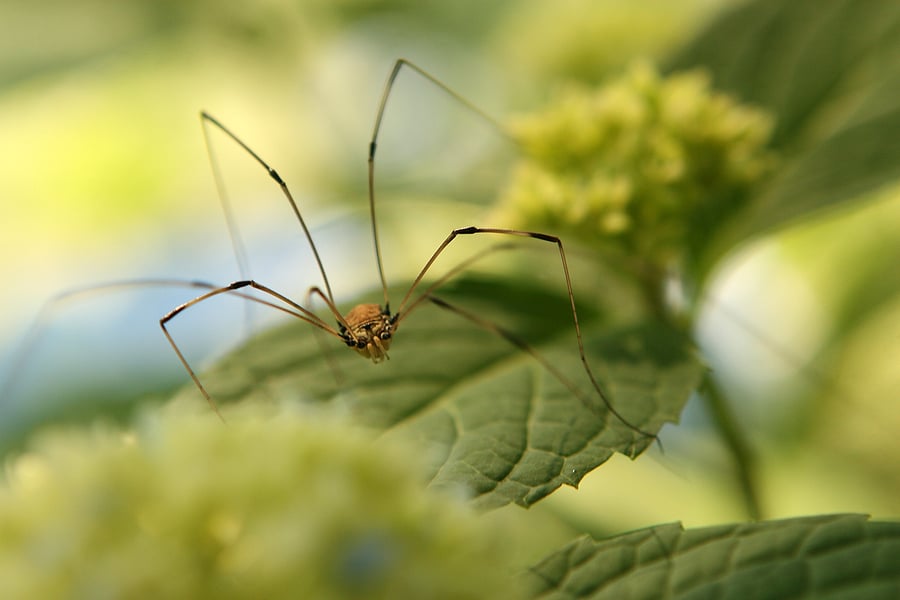
When you hear the word arachnid the first thing that usually comes to mind is spiders. While spiders do make up a large portion of arachnids, they aren’t the only members. Ticks, mites, scorpions, and harvestmen (also known as grandaddy long legs or daddy long legs) are also members of the arachnid family. Arachnids are defined as animals with 4 pairs of legs, chelicerae (which are fang-like mouthparts), and pedipalps (appendages also found near the mouth). So while they are all members of the same family, granddaddy long legs are not, in fact, spiders.
There are several key differences between granddaddy long legs and spiders. Spiders have 2 body segments (a cephalothorax and abdomen) differentiated by a narrow “waist.” Granddaddy long legs have an oval shaped body with no separation. Spiders typically have 8 eyes while granddaddy long legs have 2. Spiders produce silk and spin webs; granddaddy long legs aren’t capable of this. Spiders are also predators, using their venom to disable their prey. Granddaddy long legs are scavengers and don’t need venom to neutralize food sources.
Although they can be a little creepy looking, these pests are quite beneficial to have around. Because of their varied diet which consists of small insects, worms, snails, droppings, and fungi, granddaddy long legs help keep other pest populations under control. They are harmless to humans.
If you have a problem with granddaddy long legs or other pests, contact your local pest control company for a free evaluation.
Types of Rodents Found in the South
4 Ways To Keep The Lovebugs Away
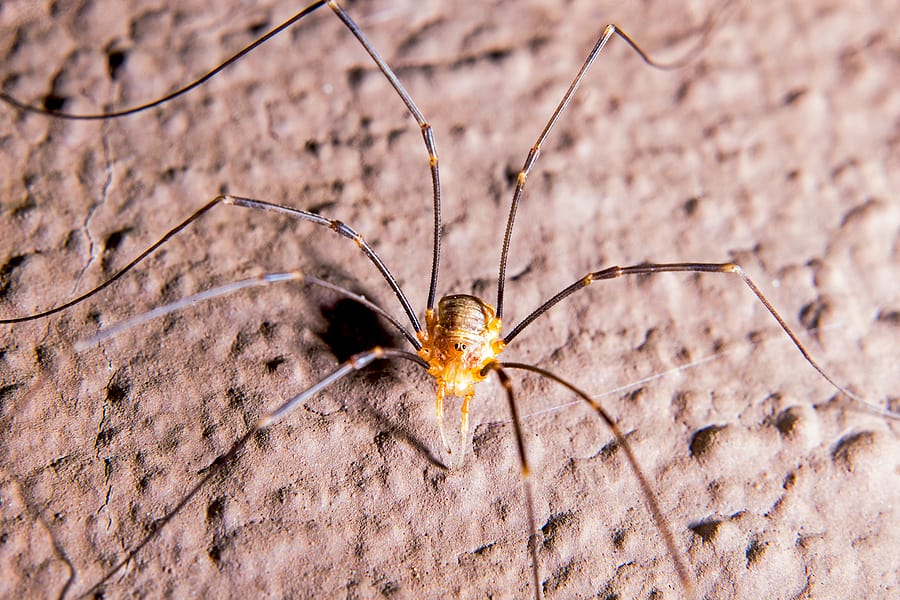
Daddy long legs, also known as harvestmen, belong to the arachnid family but they aren’t, in fact, spiders. They are cousins of spiders, mites, and scorpions. There are several differences between harvestmen and spiders. One of the most prominent is that harvestmen have one pair of eyes while spiders have 8 pairs of eyes. Harvestmen also cannot spin silk to make webs, so they can’t capture their food like spiders do. They have to ambush their prey instead.
Daddy long legs are omnivores and mostly eat spiders, earthworms, and other insects. When their food supply is limited, however, they will scavenge for whatever they can find like dead insects, insect eggs, and even decaying plants. In fact, these creatures are considered beneficial to have around your house and garden because they eat both garden and household pests.
Harvestmen prefer dark, moist environments so they are most often found in basements, crawlspaces, and garages. They have a unique ability to escape their predators by two different means: they can detach their legs (which will continue to twitch for up to an hour after they fall off) to trick their predators and escape; and they can also secrete a foul-smelling, bad-tasting chemical to deter their attackers.
Now you’ve found a daddy long legs inside your house. Should you be worried? Are these pests poisonous? It is important to distinguish the difference between poisonous and venomous. Poisonous pests cause harm when they are touched or ingested. Venomous pests cause harm by injecting venom through a bite. Although harvestmen do have fangs (also called chelicerae), they are primarily used to grasp and chew food. These arachnids are not known to bite humans and are not considered dangerous to either the health or structure of your home.
Because harvestmen are considered beneficial pests, it’s ok to leave them be if you find them lurking around your house. If you just can’t stomach the thought of sharing your personal space with them, the best way to get rid of them is to sweep or vacuum them up. If you have a problem with any other pests, contact a professional pest control company for a thorough evaluation and pest control plan.
Preventing the Top Three Summer Pests
How to Easily Deter Snakes Away from Your Property
Millipede vs Centipede – Which Is More Dangerous?
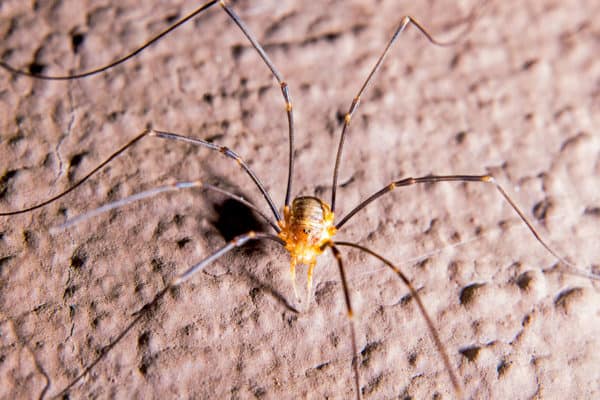
The granddaddy long legs is legendary – with claims of being the “most poisonous spider in the world but their mouths are too small to bite.” Like most legends, these claims are exaggerated and aren’t based on facts. So what is the truth about these creatures? Here’s everything you need to know about the granddaddy long legs.
No. The granddaddy long legs, AKA the daddy long legs, harvest spider, and harvestman, is actually an arthropod and closer genetically to the scorpion than a spider. While they do have 8 legs like spiders, the resemblance ends there. Spiders have spinnerets that spin silk for their webs; granddaddy long legs don’t. Spiders also have 2 body sections connected by a small, narrow waist. Granddaddy long legs have 1 body section containing their head, abdomen, and body combined. Spiders can have fangs and produce venom. Granddaddy long legs don’t have fangs and don’t produce venom. Spiders live on a liquid diet while granddaddy long legs have chelicerae (tiny claws used to hold and tear things) so they can eat small pieces of solid food. Granddaddy long legs can also self amputate their legs as a defense mechanism against predators. Unfortunately, once they lose a leg they cannot grow it back.
Granddaddy long legs are omnivores and eat a wide variety of things. They are known to eat dead and live insects, spiders, aphids, worms, snails, fungus, and even bird droppings.
Granddaddy long legs use their varied diets to keep to keep your gardens and yard free of other pests. They don’t cause damage to structures or landscaping and aren’t dangerous to humans.
Because they aren’t harmful to humans and don’t damage any structures or landscaping in your yard or garden, it is best to leave granddaddy long legs alone. Sometimes they are known to congregate in large numbers. If this is the case or if you have an issue with these or other pests, contact your local pest control company who can thoroughly evaluate your home and provide you with the appropriate treatment and prevention plan for your situation.
Prep Your Yard & Keep Mosquito Free!
What Attracts Millipedes to Your Home?
Signs You’ve Got a Rat in the House
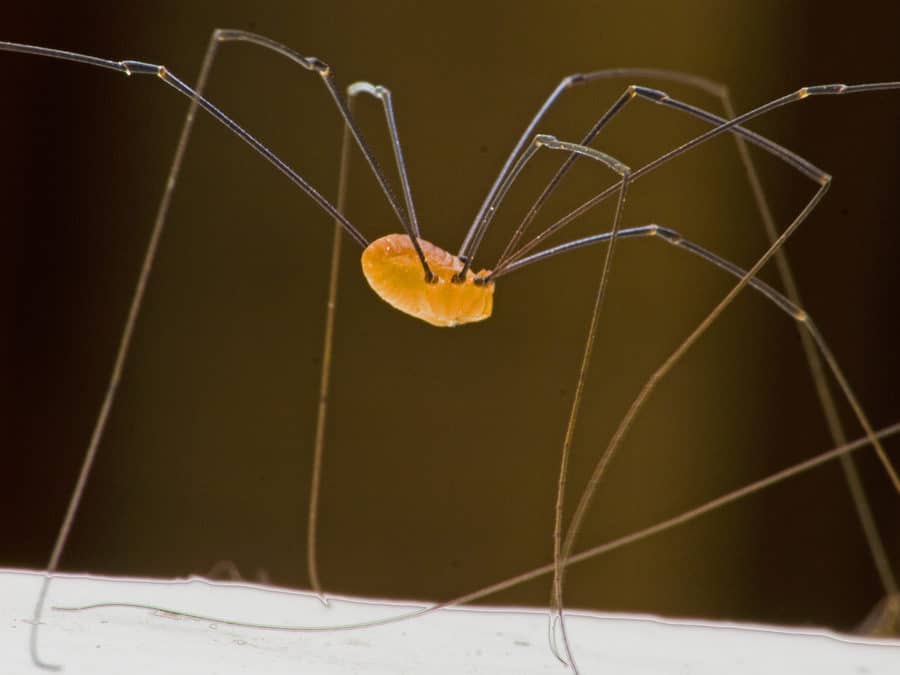
According to popular belief, the granddaddy long leg is the most poisonous spider in the world. While the origins of this myth are unknown, we do know one thing for certain: granddaddy long legs are not spiders and they aren’t poisonous (or venomous for that matter).
Granddaddy long legs, also known as harvestmen, are often mistaken for spiders because of their spider-like appearance and movements. While they do have some spidery characteristics, they are not, in fact, spiders. They are classified as arachnids like spiders because of their 8 legs and movements similar to their spider cousins. Other arachnids that aren’t spiders include ticks, mites, and scorpions. Despite their appearance, granddaddy long legs are actually more like scorpions than spiders. Spiders have 8 eyes while granddaddy long legs only have 2. Spiders also have a distinct waist separating their thorax/head from their abdomen while granddaddy long legs have one fused cavity containing their head, thorax, and abdomen. Finally, spiders produce silk and spin webs. Granddaddy long legs do not produce silk so they can’t make webs.
Poisonous and venomous are often confused, especially when it comes to pests. Poisonous creatures cause harm through touching or ingesting. Venomous creatures cause harm through injection of venom. As far as humans are concerned, granddaddy long legs are neither poisonous or venomous.
Granddaddy long legs do have fang-like mouth parts (also known as chelicerae) that they use to grasp and chew food but they are not used to bite humans nor inject venom. These arachnids have developed some rather unique methods of defense from predators. First, they have a set of stink glands that they deploy to help ward off predators. They also have been known to curl up and play dead when disturbed. The most unique defense mechanism, however, is their ability to shed their legs when grabbed (also known as autotomy). Unfortunately, once they shed an appendage they are unable to grow it back.
Because they pose no threat to humans (and, in fact, feed on other smaller insects that may be in and around your home), you don’t necessarily need to get rid of them should you stumble across one. They prefer dark, moist environments and are often found in crawl spaces, basements, and garages. The best way to get rid of a granddaddy long leg is to sweep or vacuum it up.
Because what attracts granddaddy long legs are smaller pests they can prey on, seeing a large number of them in your home can indicate another pest control issue. If you suspect you have a pest problem, contact a professional pest control company who can help with pest and spider identification and the best course of treatment and future prevention.
Is That Bird’s Nest Dangerous?
Why You Still Need Pest Control This Winter
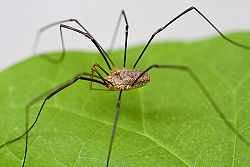 It may be one of the most easily identifiable pests but it’s also commonly misrepresented. Granddaddylonglegs, or daddylonglegs, are often thought to be spiders but are actually harvestmen. Harvestmen get their name because that is when they are usually seen…during harvest time. There are about 150 species of daddylonglegs in North America.
It may be one of the most easily identifiable pests but it’s also commonly misrepresented. Granddaddylonglegs, or daddylonglegs, are often thought to be spiders but are actually harvestmen. Harvestmen get their name because that is when they are usually seen…during harvest time. There are about 150 species of daddylonglegs in North America.
When you spot a granddaddylongleg, with its long and thin legs, it is not hard to see where the “longlegs” part of their name comes from. They use their infamous legs to catch insects, spiders, and plants that they feed on. They are found around structures of homes and buildings, and tree trunks, presumably looking for food. Inside of a structure they are typically found in garages, basements, crawlspaces, or other damp areas of the home. You won’t usually find them in the common living areas.
Another common misconception about daddylonglegs is that they are poisonous or venomous…neither of which are true. They are not harmful to humans or animals, they won’t even bite.
Did you know that granddaddy long legs weren’t spiders?
Call Northwest Exterminating to get rid of grand daddy long legs or other pests in your home or business.